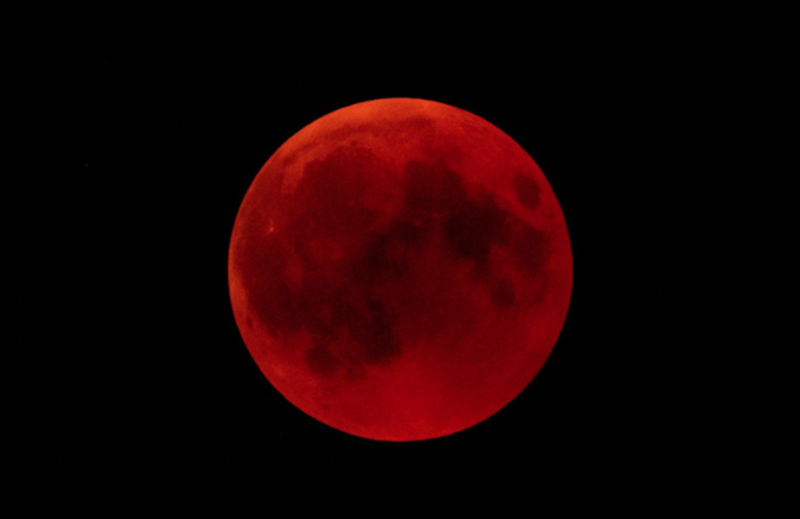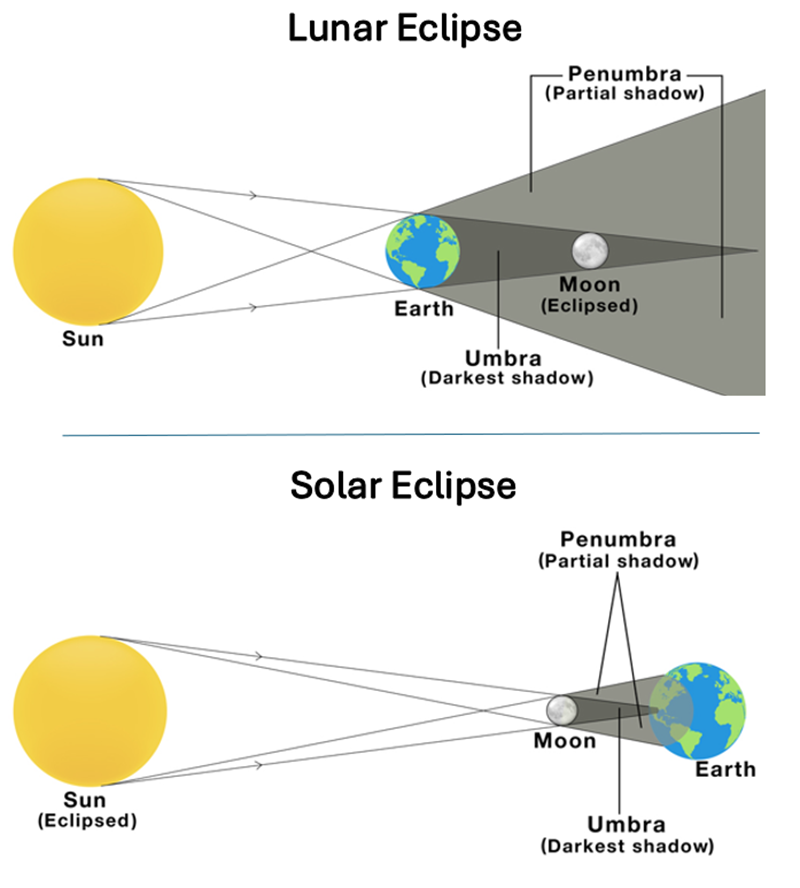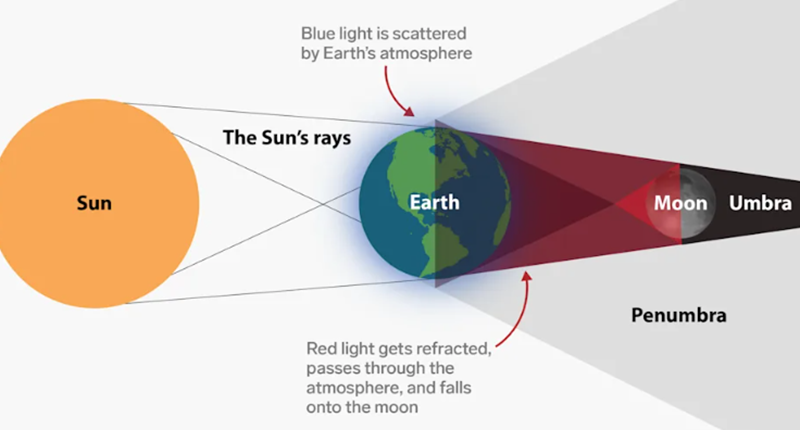The Blood Moon
The Blood Moon - the astounding form of the moon we see during total lunar eclipses, i.e., when the Earth is between the Sun and the Moon, in such a way that it covers the moon completely, thus casting the Earth's shadow on the moon. The very supernatural-seeming, uncanny color of the moon. Not gonna lie, it does seem pretty scary, but in a beautiful way.

Ever wondered what makes the moon turn red? Does the moon get freaky in the dark and be like "imma get red, baby"? If you think that's what happens, know that that's not what happens (I'm pretty sure that's not what you thought, btw). It's just white light from the sun and the Earth's atmosphere painting the moon red.
First, let's get to know about eclipses. An eclipse is an astronomical event that occurs when one celestial body moves into the shadow of another, temporarily obscuring its light. With regards to the Sun, the Earth and the Moon, the predominant eclipses are the Lunar Eclipse and Solar Eclipse.
- Lunar eclipse is when the Earth comes in between the Sun and the Moon, therefore covering the moon completely.
- Solar eclipse is when the moon comes in between the sun and the earth, thereby casting it's shadow on the portion of Earth above which it is.

This blood moon is caused by the Lunar Eclipse.
As evident in the picture, during a lunar eclipse, the moon is totally covered by the Earth. Earth's shadow falls on it. There is no way for light to reach the Moon for it to be reflected back to the Earth, right? Guess what, yo' boy refraction just entered the party.
In one of my posts of Rayleigh Scattering, I had talked about white light being composed of seven colours, VIBGYOR, and each color having different wavelengths (If you haven't read it, go read it! I promise it's interesting). If you haven't read this, follow the link to get directed there, as it contains info about the behaviour of different colors, which is prerequisite for understanding this.
Now for the final part: When I mentioned refraction, it is obvious that light bends around the Earth to reach the moon, because of its atmosphere. In addition to refraction, scattering of light too takes place because of the air molecules of the atmosphere.
Going back to Rayleigh Scattering, of the seven colors in white light, Red is of the least energy, which means it scatters the least.
So, before the refracted white light from the sun bends around to reach the moon, six of the seven colors in white light would have already been scattered in the Earth's sky before exiting the Earth's atmosphere, therefore leaving red alone.
This red light, thus reaches the moon, and gets reflected back from the moon, to haunt us, yet flabbergast us with the fiendish look of the moon.

Another question: If that's the case, then why doesn't the moon turn red only after being totally covered by the shadow of the Earth instead of gradually turning red? That’s because the intensity of the red light falling on the Moon is very low compared to the intensity of the white sunlight. As the eclipse progresses, the white light is blocked little by little, and the relative contribution of the faint red light becomes increasingly noticeable. Thus, even before the Moon is fully engulfed in Earth’s umbra, we begin to see it darken and take on a reddish tint. The transition is gradual because it’s essentially a “tug of war” between the overpowering white sunlight and the subtle, filtered red light refracted through Earth’s atmosphere. Only once the Moon is fully inside the umbra does the red glow dominate completely, giving us the full, dramatic spectacle of the Blood Moon.
Crazy stuff, huh? Nature never stops surprising us. The Blood Moon may look eerie, even supernatural, but it’s simply the result of sunlight bending and filtering through Earth’s atmosphere before reaching the Moon. So, the next time a lunar eclipse occurs and the Moon turns red, don’t worry—it isn’t a bad omen, and no mystical creature is about to rise. (Well, unless it’s a bull… then maybe you should run. 😉 Just kidding—it’s all myth.) Instead, sit back, enjoy the view, and remind yourself that you’re witnessing one of the most breathtaking cosmic spectacles our skies have to offer.